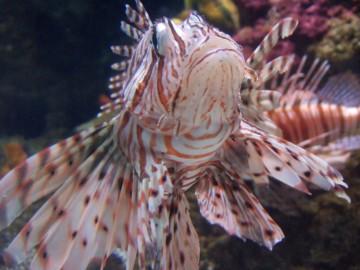
Section Branding
Header Content
Manual Addresses Lionfish Menace
Primary Content

Coastal resource managers have a new tool for fighting an Atlantic pest.
Scientists at the National Oceanic and Atmospheric Administration are recommending ways of killing invasive lionfish with a recently released manual.
The manual outlines the benefits of spears, traps, nets and fishing derbies, among other tactics.
Fisheries managers consider lionfish an environmental disaster.
Scientists five-years ago confirmed their presence at Gray's Reef National Marine Sanctuary off Georgia's coast.
The sanctuary's Greg McFall says, the lionfish reproduce very quickly.
"In their native environment, they are competing for a very limited number of resources with each other, so that keeps their populations in-check," McFall says. "But here in the South Atlantic Coast and in the Caribbean, there are a lot of resources for them to prey upon."
The fish once found only in the Indian and Pacific Oceans spread to the Atlantic by ship.
"Lionfish are native to the Indo-Pacific and in their natural environment they don't have any predators," McFall says. "They do have parasites which we don't have here in the Atlantic or in the Caribbean."
Without action, the lionfish can kill economically important species like snapper and grouper.
Tags: GPBnews, Atlantic coast, orlando montoya, Biology, Gray's Reef National Marine Sanctuary, stem, National Oceanic and Atmospheric Administration, lionfish, Greg McFall, ecoloy
